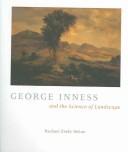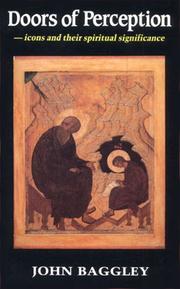| Listing 1 - 10 of 78 | << page >> |
Sort by
|
Book
Year: 2019 Publisher: New York, NY : Bloomsbury Academic,
Abstract | Keywords | Export | Availability | Bookmark
 Loading...
Loading...Choose an application
- Reference Manager
- EndNote
- RefWorks (Direct export to RefWorks)
"This book is open access and available on www.bloomsburycollections.com. It is funded by the University of Oslo and Utrecht University. Judaism, Christianity and Islam are known to privilege words over images. This book shows, however, that the reality is more complex. Figurations and Sensations of the Unseen explores the complex procedures used to render the invisible as visible and the elusive as tangible in these three traditions. Working from different disciplinary angles, contributors reflect on figuration and sensation in biblical culture, medieval Jewish culture, the imagination of the unseen in Islamic settings, Christian assaults on 'idolatry' in Africa, baroque and modern Church art, contemporary Eastern Orthodox tradition, photography on the East African coast, European opera and literature, and more. The book shows that the three religious traditions have formed sensorial regimes: embodied habits, traditions and standards for seeing, sensing, displaying, and figuring that which could not, or should not, be seen. So, the desire for seeing the invisible and experiencing the beyond are paradoxically confirmed, contested and controlled, by the sensorial regimes in vogue. This carries over even into secularized use of religious figurations in arts and literature. Figurations and Sensations of the Unseen is important reading for scholars of anthropology, religious studies, Jewish studies, Christian studies, Islamic studies, art history, cultural studies, biblical studies and archaeology."--Bloomsbury Publishing.
Book
Year: 2019 Publisher: New York, NY : Bloomsbury Academic,
Abstract | Keywords | Export | Availability | Bookmark
 Loading...
Loading...Choose an application
- Reference Manager
- EndNote
- RefWorks (Direct export to RefWorks)
"This book is open access and available on www.bloomsburycollections.com. It is funded by the University of Oslo and Utrecht University. Judaism, Christianity and Islam are known to privilege words over images. This book shows, however, that the reality is more complex. Figurations and Sensations of the Unseen explores the complex procedures used to render the invisible as visible and the elusive as tangible in these three traditions. Working from different disciplinary angles, contributors reflect on figuration and sensation in biblical culture, medieval Jewish culture, the imagination of the unseen in Islamic settings, Christian assaults on 'idolatry' in Africa, baroque and modern Church art, contemporary Eastern Orthodox tradition, photography on the East African coast, European opera and literature, and more. The book shows that the three religious traditions have formed sensorial regimes: embodied habits, traditions and standards for seeing, sensing, displaying, and figuring that which could not, or should not, be seen. So, the desire for seeing the invisible and experiencing the beyond are paradoxically confirmed, contested and controlled, by the sensorial regimes in vogue. This carries over even into secularized use of religious figurations in arts and literature. Figurations and Sensations of the Unseen is important reading for scholars of anthropology, religious studies, Jewish studies, Christian studies, Islamic studies, art history, cultural studies, biblical studies and archaeology."--Bloomsbury Publishing.

ISBN: 0226142302 Year: 2004 Publisher: Chicago ; London University of Chicago Press
Abstract | Keywords | Export | Availability | Bookmark
 Loading...
Loading...Choose an application
- Reference Manager
- EndNote
- RefWorks (Direct export to RefWorks)
Book
ISBN: 1527580016 Year: 2022 Publisher: England : Cambridge Scholars Publisher,
Abstract | Keywords | Export | Availability | Bookmark
 Loading...
Loading...Choose an application
- Reference Manager
- EndNote
- RefWorks (Direct export to RefWorks)
Providing an excellent example of why folk artists can be appreciated as carriers of knowledge, even if they are unaware of it, this book could change the ways we understand and appreciate American folk arts. Connecting a sharecropper from Georgia in the Southern United States to a protector and healer in Touba, Senegal, West Africa, the holy city of Mouridism, and the final resting place of its founder, Shaikh Ahmadou Bàmba Mbàcke, it makes an interesting link while examining the cultural aspects of two very different and yet similar paths of life. Historians and art historians alike will find this investigation of African American art and folk culture both interesting and insightful. Not only does this book trace the characteristics of art through the African Diaspora, but it also traces Islam through those same diasporic transportations of colonial exploration and slavery.
Book
Year: 2019 Publisher: New York, NY : Bloomsbury Academic,
Abstract | Keywords | Export | Availability | Bookmark
 Loading...
Loading...Choose an application
- Reference Manager
- EndNote
- RefWorks (Direct export to RefWorks)
"This book is open access and available on www.bloomsburycollections.com. It is funded by the University of Oslo and Utrecht University. Judaism, Christianity and Islam are known to privilege words over images. This book shows, however, that the reality is more complex. Figurations and Sensations of the Unseen explores the complex procedures used to render the invisible as visible and the elusive as tangible in these three traditions. Working from different disciplinary angles, contributors reflect on figuration and sensation in biblical culture, medieval Jewish culture, the imagination of the unseen in Islamic settings, Christian assaults on 'idolatry' in Africa, baroque and modern Church art, contemporary Eastern Orthodox tradition, photography on the East African coast, European opera and literature, and more. The book shows that the three religious traditions have formed sensorial regimes: embodied habits, traditions and standards for seeing, sensing, displaying, and figuring that which could not, or should not, be seen. So, the desire for seeing the invisible and experiencing the beyond are paradoxically confirmed, contested and controlled, by the sensorial regimes in vogue. This carries over even into secularized use of religious figurations in arts and literature. Figurations and Sensations of the Unseen is important reading for scholars of anthropology, religious studies, Jewish studies, Christian studies, Islamic studies, art history, cultural studies, biblical studies and archaeology."--Bloomsbury Publishing.
Book
Abstract | Keywords | Export | Availability | Bookmark
 Loading...
Loading...Choose an application
- Reference Manager
- EndNote
- RefWorks (Direct export to RefWorks)
Book
ISBN: 9789383098460 9383098465 Year: 2014 Publisher: Septon : New Delhi : Museum of Sacred Art ; Niyogi Books,
Abstract | Keywords | Export | Availability | Bookmark
 Loading...
Loading...Choose an application
- Reference Manager
- EndNote
- RefWorks (Direct export to RefWorks)
Published to accompany the 2014 art exhibits at Museum of Sacred Arts, Belgium.
Book
ISBN: 9781137350039 1137350032 Year: 2014 Publisher: New York, NY Palgrave Macmillan
Abstract | Keywords | Export | Availability | Bookmark
 Loading...
Loading...Choose an application
- Reference Manager
- EndNote
- RefWorks (Direct export to RefWorks)
Book
ISBN: 9780520252134 0520252136 9780520933965 0520933966 1282359282 9786612359286 Year: 2008 Publisher: Berkeley, CA : University of California Press,
Abstract | Keywords | Export | Availability | Bookmark
 Loading...
Loading...Choose an application
- Reference Manager
- EndNote
- RefWorks (Direct export to RefWorks)
In this encounter between reflections on Christian theology and the history of art and music, James D. Herbert considers how specific works of art establish a relation between the divine and the earthbound audiences for whom the art was created. He looks at five case studies over four centuries: the architecture and artworks that glorified Louis XIV at Versailles, the interaction of libretto and music in Richard Wagner's Ring of the Nibelung, Claude Monet's enormous paintings of water lilies mounted at the Orangerie of Paris in 1927, the inaugural performance in 1962 of Benjamin Britten's War Requiem at the new Anglican cathedral in Coventry, and Robert Wilson's recent installation based on the Passion, 14 Stations.

ISBN: 0881410713 9780881410716 Year: 1988 Publisher: New York (N.Y.): St Vladimir's seminary press,
Abstract | Keywords | Export | Availability | Bookmark
 Loading...
Loading...Choose an application
- Reference Manager
- EndNote
- RefWorks (Direct export to RefWorks)
Icons --- Spirituality --- Icons --- Spirituality in art.
| Listing 1 - 10 of 78 | << page >> |
Sort by
|

 Search
Search Feedback
Feedback About UniCat
About UniCat  Help
Help News
News